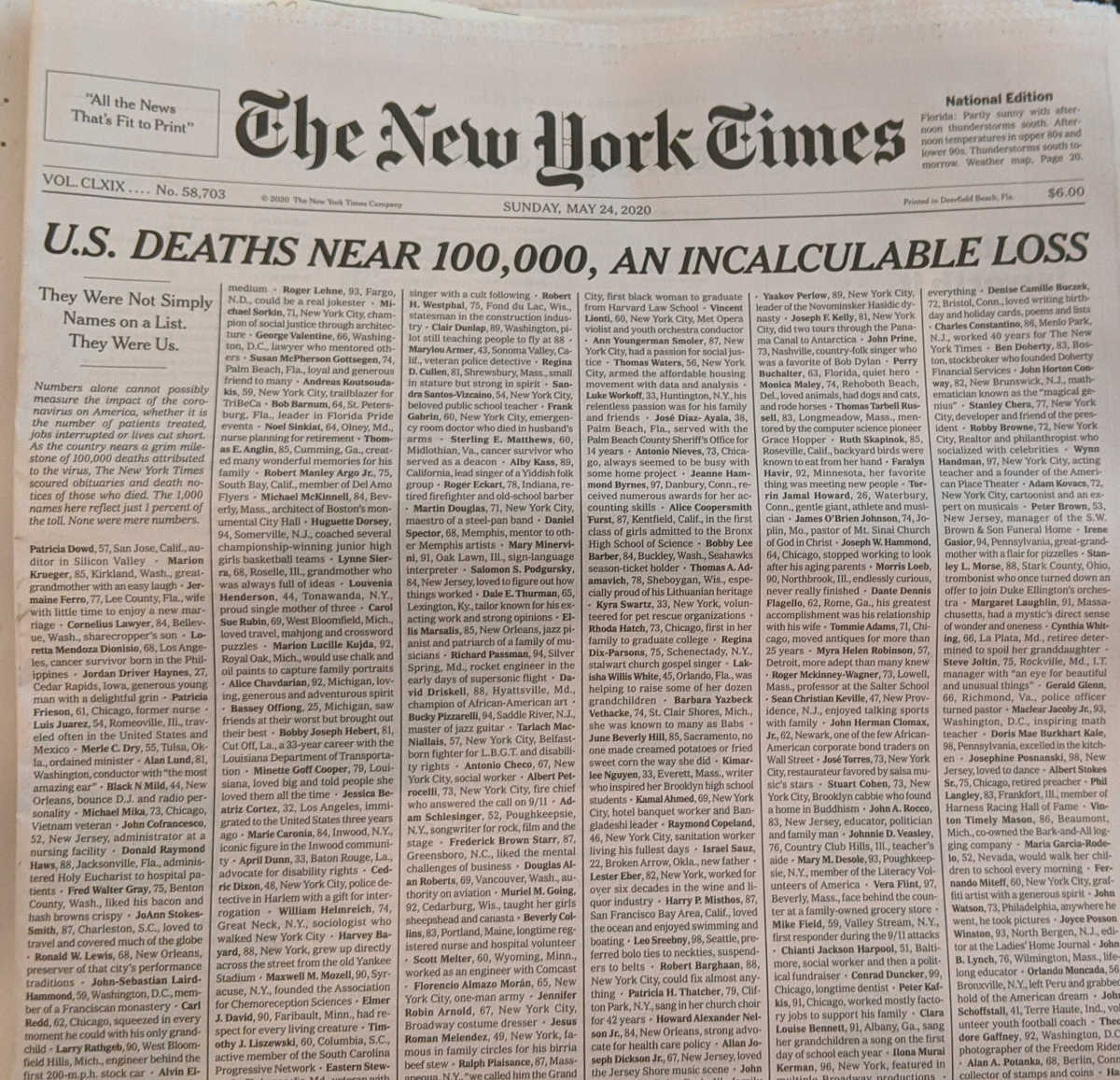The COVID-19 has cost so many more lives in the United States, than 9/11, and Vietnam War together. The New York Times published the names of 1,000 people who died of the coronavirus on the front page of its paper edition.
They not only list the names, ages and location, they also added a few words about each person. I picked a few names randomly from the page:
Chianti Jackson Harpool, 51, Baltimore, social worker and then political fundraiser
Jesus Roman Melendez, 49, New York, famous in family circles for his birria beef stew
Jana Prince, 43, Gretna, La., social worker who dedicated her life to others.
Maria Garcia-Rodelo, 52, Nevada, would walk her children to school every morning
Ricardo Castaneda, 64, New York City, caricaturist and psychiatrist who served his patients until the end.
Marylou Armer, 43, Sonoma Valley, Calif., veteran police detective
Brilliant illustrators took the early digital version and projected a caricature of the president playing golf on to it.
The original drawing by Michael de Adder
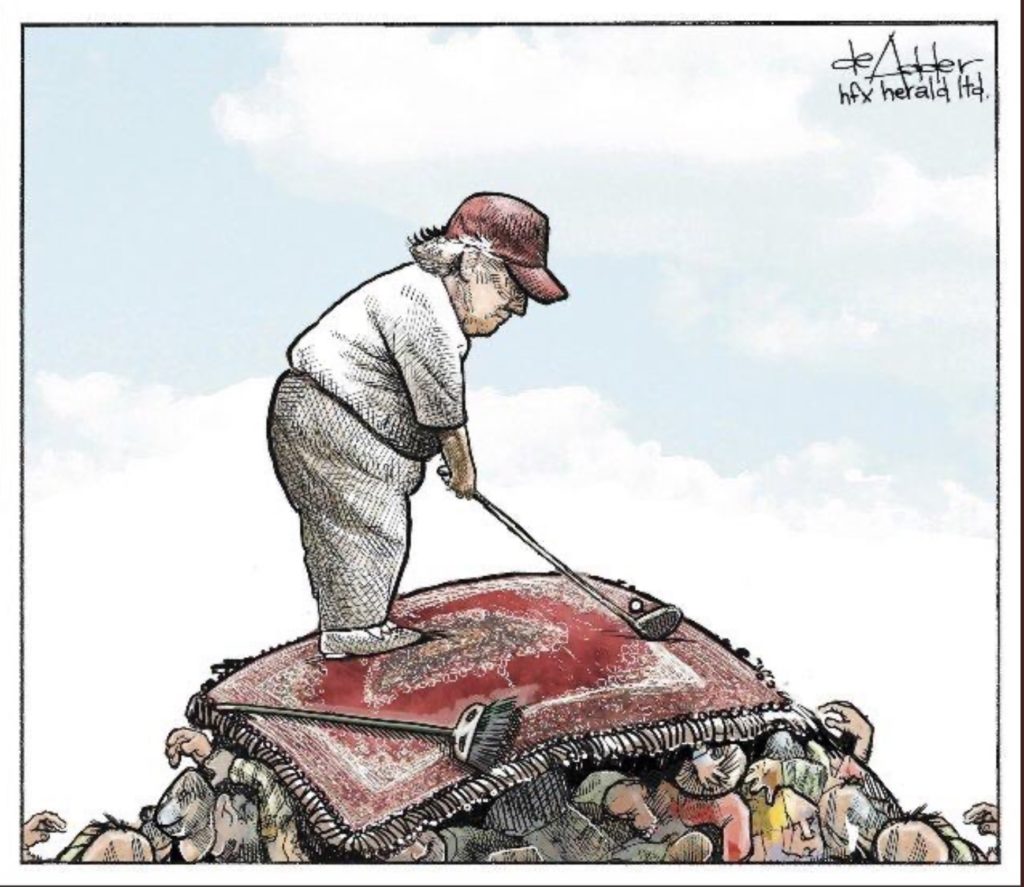
@JustVent6 fixed it up the NYTimes Front page with de Adder’s work
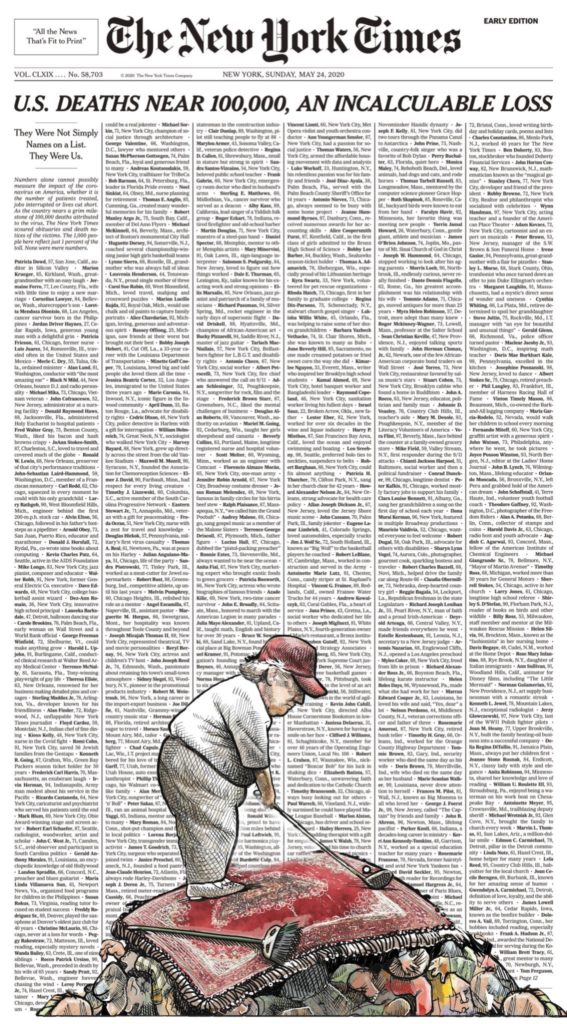
Mark Dolk, illustrator from the Netherlands posted this image on Twitter on May 11, 2020
He posted on May 23, 2020 this image in a collage with the New York Times front-page.

New Times’ online edition published an interactive page with a count of the numbers of death per day in the bottom right corner.
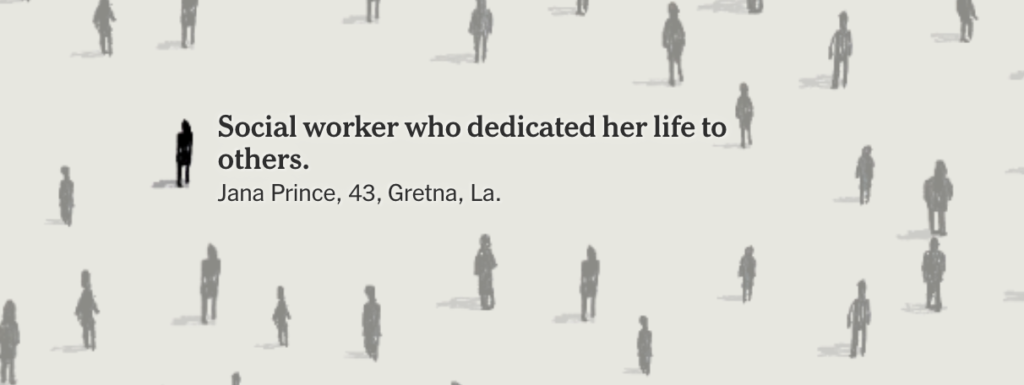
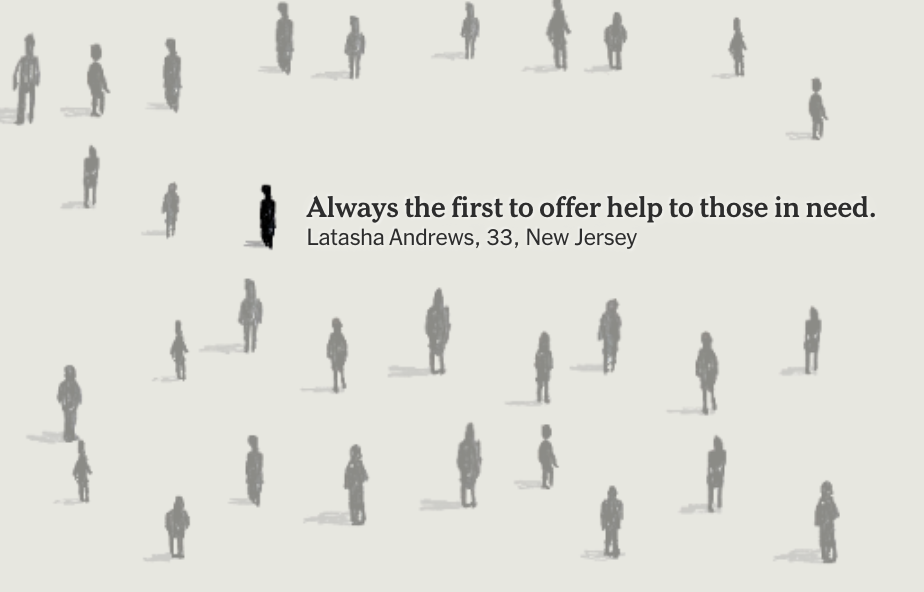
Insider: The Project Behind a Front Page Full of Names – A presentation of obituaries and death notices from newspapers around the country tries to frame incalculable loss.
#SaveMyLife Journalism
A term, I learn from Dave Winer, who called it the new journalism business model and collected First-person stories of those who were sick from the coronavirus. These are Winer’s examples
Just This Breath by Heather Sellers “I close my eyes. The hardest part is taking the next breath. I must breathe very, very slowly, in a very specific way.”
“We Will Have to Learn to Live with COVID-19“ – Interview with Peter Piot by Der Spiegel. Belgian pandemic expert Peter Piot helped discover the Ebola virus, and is currently advising the EU on the COVID-19 pandemic. He is also a survivor of the disease, and found it much worse than he had expected.
‘I Wish I Could Do Something for You,’ My Doctor Said – by Mara Gay, member of the editorial board at the New York Times. “Young, healthy people like me are getting very, very sick from the disease caused by the coronavirus.”
It’s a good day by Jeffery Zeldman — “I wheezed like a busted accordion after carrying a bag of empty bottles down the hall to the recycling room in my apartment building—a journey of no more than 20 paces in each direction. I breathe normally as long as I don’t expend more physical energy than it takes to sit still in bed.
Amid the Coronavirus Crisis, a Regimen for Reentry By Atul Gawande. Health-care workers have been on the job throughout the pandemic. What can they teach us about the safest way to lift a lockdown?
